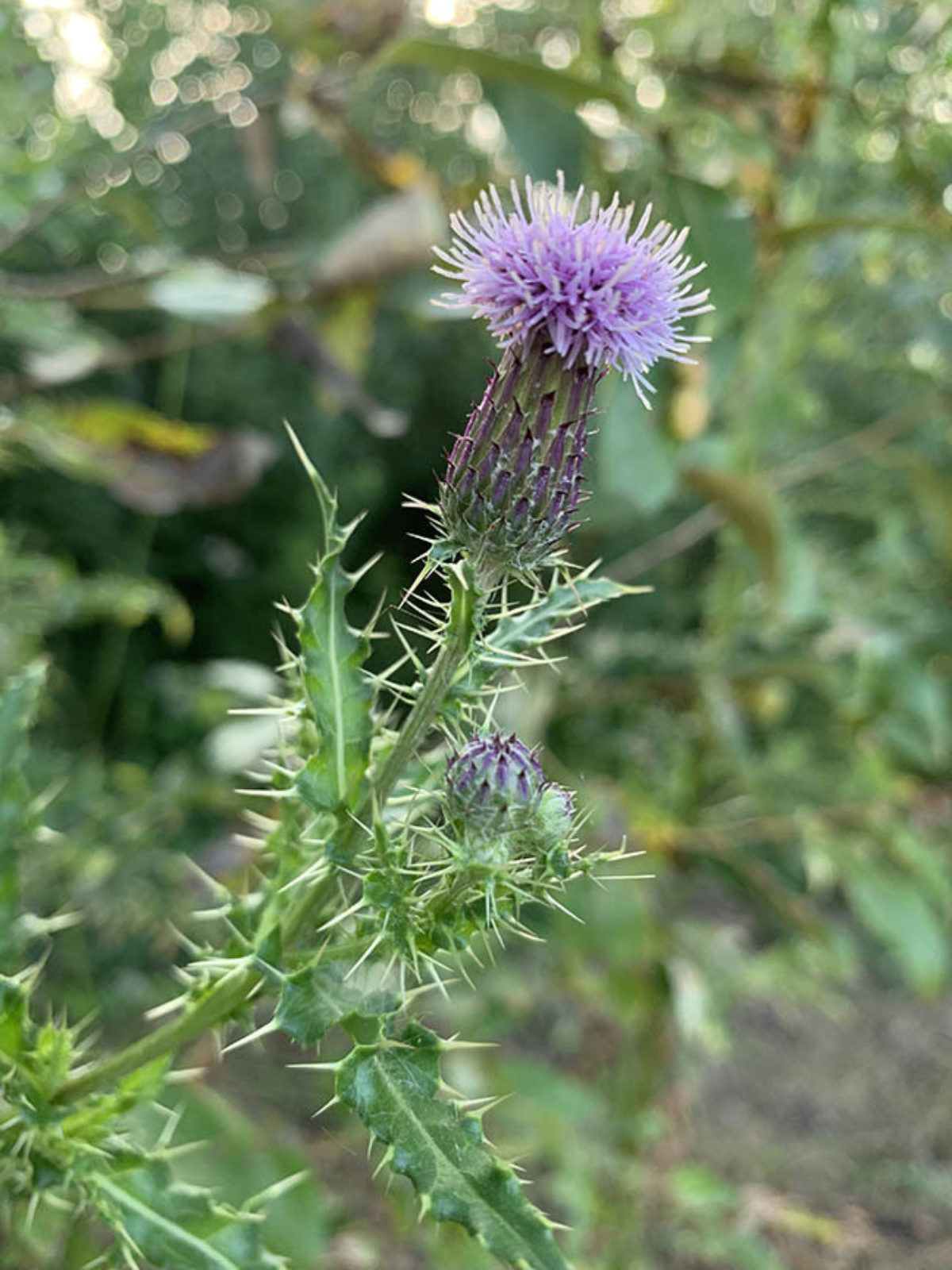What Is Canada Thistle
Canada Thistle (Cirsium arvense), also known as Creeping Thistle, is an invasive weed native to Europe that propagated in North America in the early 17th century. It has an aggressive root system that can resist almost any weather condition, spreads quickly, and invades new areas fast enough to end the previous species that were there.
Canada Thistle can grow to up to 5 feet, and it produces over 3,500 seeds over its lifetime, and seeds spread easily from blowing in the wind and can go down sidewalks and roads or stay dormant for over 20 years. It can also propagate through root cutting, which means even a small piece of root can grow into a plant.
Canada Thistle can be a bit problem in agriculture; it affects crop yields, encroaches over native plants, and produces high levels of Nitrate, which are harmful to the local fauna. This weed is commonly seen on paths, trails, and roadsides; it can propagate freely in most places. This weed greatly impacts the environment; it displaces local botanical species and disrupts ecosystems.

Why Is Canada Thistle Growing In My Lawn?
There are four main reasons Canada Thistle and other types of weeds may grow on your lawn. If you take care of all of them, you will notice a significant difference in your lawn every season.
Overly Dry Soil
Canada Thistle can tolerate and thrive in saline (up to 2-3% salt) and dry soils. It has very deep roots that can reach up to 6 feet deep, and it doesn’t tolerate waterlogged soils. Mowing your grass too low can decrease how much water your soil retains, weaken your plants, and also make it easier for Canada Thistle and other weeds to encroach on your lawn.
To keep your soil from becoming overly dry, water your lawn deeply 2-3 times every week and make sure your grass is long enough to prevent weeds from reaching sunlight. This will strengthen your grass and help it fight of the invasive weeds.
Weak Grass
Sometimes, Canada Thistle can grab a hold of your lawn because your grass is weak – and proper watering is just one of the factors. Your grass may be weak because it’s overshadowed by trees or bushes and may not be getting enough sunlight.
A dull lawn mower may also be the reason for weak grass. Dull lawn mowers are more likely to pull at the entire plant than cut it cleanly; this makes the regrowing process of your grass slower and can create patches, which in turn gives Canada Thistle and other weeds time and space to start encroaching on your lawn.
Use sharp blades on your lawn mower to ensure all cuts are clean and your grass can regrow as soon as possible.
Soil Compaction
Soil compaction refers to how compact the soil is on your lawn. Very compact soil can keep water and air from reaching the roots of your grass while allowing superficial weeds to grow, mostly unimpeded. Canada Thistle, in particular, also benefits from less-compact soil, due to its very deep root system. However, keeping low compaction will benefit your lawn in the long run by strengthening your grass and helping it keep all weeds controlled.
To make sure your grass is getting all the nutrients and water it needs, aerate your lawn in the late summer months and throughout fall. Annual aeration reduces compaction, allows grassroots to receive nutrients, and helps microorganisms oxidize your soil and produce beneficial chemical compounds by mixing oxygen and water.
When Does Canada Thistle Appear
Canada Thistle seeds germinate in New Jersey in mid-April to late June, which is why The time of the year is crucial when wanting to get rid of these weeds. Since Canada Thistle first blooms at a certain time of the year, mowing it in late June is a good starting point, but that won’t stop them from producing flowers.
Canada Thistle thrives in temperatures ranging from 30-90°F and precipitation levels ranging from 15-30 inches per year. Like most weeds, it is extremely adaptable to environmental conditions.
How To Identify Canada Thistles
As mentioned before. it can grow up to 5 feet tall with slender grooved stems that branch only at the top. It has dense clonal growth of male and female plants. It has many flowerheads on top, on the tip of the branches, that can bloom between June and October. Their color can go from white to pink or purple.
The leaves are usually lance-shaped, and the margins might be smooth or spiny, with little or no hairs at all. This weed can produce from 1500 to 5300 seeds throughout its life, these are dispersed by the wind, and that’s how its propagation can get easily out of control. Some of the roots can also grow up to the surface and form new plants.
How To Control Canada Thistle
The best way to control Canada Thistle is to have strong, healthy grass that can shade out this and other weeds completely; this will deny them sunlight, and a properly aerated lawn will ensure your grass receives most of the water and nutrients.
Coupled with this, it’s a very good idea to use herbicide treatments when the plant is in the bud/flower stage – even one application can do wonders and drastically reduce the population.
At Grasshoppers Landscaping, we offer complete treatment for Canada Thistle and include multiple applications throughout the season to ensure your lawn stays weed free. We also offer aeration services, so your grass can get all the nutrients it needs, grow strong, and keep annoying weeds at bay, and we are very meticulous make sure your weed problem doesn’t spread around.


